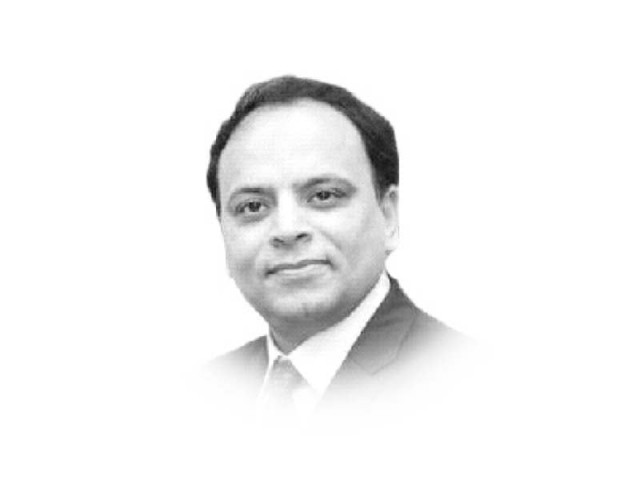Rethinking tax-investment-exports model of economic growth
Mechanism necessary for increasing exports, requires a lucid understanding of the tax-investment-exports nexus

Prime Minister Imran Khan, while addressing the inaugural ceremony of the 14th International Chambers Summit 2022, said that Pakistan remained focused on bolstering exports to stimulate economic growth. The underlying mechanism necessary for increasing exports, however, requires a lucid understanding of the tax-investment-exports (TAXINEX) nexus essential for achieving sustainable economic growth alongside strengthening PKR against foreign currencies.
The volume of TAXINEX actually leaves a holistic impact on the entire economy. GDP fundamentally relies on domestic consumption spending, government spending, investment and the difference between exports and imports. John Keynes, a renowned English economist, believed that spending leads to economic growth. Despite opprobrium, he believed that a central bank may reduce interest rate making money cheaper so that individuals buy more goods and increase overall spending and GDP. Some economists, however, note that Pakistan’s TAXINEX, as a percentage of GDP, has sharply declined in the recent years. Among other reasons, it is perhaps because money was viewed as merely flowing from producers to workers as wages and back to producers as products’ payments. As a matter of fact, however, the flow of money in a society is a complex phenomenon involving many other components of a country’s GDP. For example, the additions of money supply in the form of exports and leakage of this supply in terms of imports remain some of such factors influencing the money flow. This suggests that an understanding of the impact of money flow on GDP is crucial for the government and State Bank of Pakistan (SBP) to adjust monetary and fiscal policies for improving the economy. The impact of money flow on GDP is also equally necessary for increasing TAXINEX in general and exports in particular.
There has traditionally been a greater focus on the narrative of increasing tax to GDP ratio in Pakistan. As a result, there has always been a spooking dissonance between the government and the business community. As money is injected in an economy through consumer spending, government spending, investment and net exports, the same needs to have a vacillating linkage with an outflow component of money such as taxes. This suggests that increasing taxes, as part of TAXINEX, may not hurt the economy because the corresponding quantum of investment and exports will also re-precipitate. The narrative of increasing tax to GDP ratio, therefore, requires a de novo revision by focusing on enhancing TAXINEX to GDP ratio. It is because taxes are technically treated as an outflow component of money in an economy. On the operational side, there are several reasons behind Pakistan’s declining exports growth trends. These include, but not limited to, lack of competitiveness, limited access to global markets, higher tariffs, over reliance on traditional export products, and lack of infrastructure and research. Improving export competitiveness and robust research on accessing global markets, in such areas as IT, needs a specialised focus as part of increasing TAXINEX revenue. Performance based subsidies may be extended to exporters with the condition that the same will be withdrawn if the desired targets are not achieved. As per the evidence available from the international case studies, such as China, the establishment of rightly located Special Economic Zones (SEZs) can play a pivotal role in expanding exports volume in a disciplined manner. The success of China’s Shenzen SEZ was due, primarily, to better locational dynamics. One of them was its geographical contiguity with Hong Kong that transformed it into a principal access point for the entire world. Pakistan also needs such locations for boosting its exports prodigiously. Furthermore, one window tax operations and improvements in all indicators of ease of doing business index inherently increase the TAXINEX volume.
Instead of blindly following precarious economic approaches, a better model is to analyse real time case studies from the world in Pakistan’s perspective. Bangladesh, for example, remains one such success story suggesting how an increase in TAXINEX to GDP ratio can take a country to next levels of economic prosperity. The country has succeeded in pulling herself out from the least developed countries to developing countries category. Owing to better penetration into global markets alongside exports competitiveness, Bangladesh earned USD 20 billion in just five months of current 2021-22 fiscal year by showing year-on-year exports growth of 24.29 per cent. According to the data shared by the country’s Exports Promotion Bureau, Bangladesh has set its exports target for the current fiscal year at USD 43.5 billion including USD 35.14 billion from readymade garments. Due to competitiveness in the areas of woven and knitwear garments, its exports volume continues to increase sharply. Bangladesh is growing at a rate of over 6% since 2011. According to IMF, it will attain 7.9% economic growth rate in the current year. The main reason remains a higher growth in exports that naturally increases TAXINEX to DGP ratio in rational proportions.
Now the question is what lessons Pakistan can learn from Bangladesh and China to bolster its exports volume using TAXINEX model? These lessons can be classified as policy lessons and operational lessons. On the policy side, it is necessary to treat monetary and fiscal policies as an integral part of each other at the research level. There is a need to increase the consultation levels between the SBP, the ministry of commerce, and various federal and provincial tax collection agencies. The TAXINEX model involves two money inflow components and one outflow component. This makes a rational division between the components with a view to increase Pakistan’s long term economic growth and strengthen PKR against other currencies. On the operational side, Pakistan needs to focus more on textile and IT sectors in line with Bangladesh’s strategy. Compared with Bangladesh’s competitiveness in the areas of woven and knitwear garments, Pakistan also needs to bring the competitiveness index of its textile sector up through innovative thinking as per global markets requirements. There is a great potential in Pakistan’s IT sector. It needs government’s attention in showcasing the country’s talent worldwide alongside carrying out IT research for optimally harnessing the potential of online marketing platforms. In addition to traditional sectors, the informal lattice of new export sectors also needs to be explored systematically. Advancing the narrative of increasing tax to GDP ratio does not cover the entire demurring dementia behind a developing economy. Increasing TAXINEX to GDP ratio is a better economic snippet for Pakistan that actually means increasing exports, ensuring sustainable economic growth and guaranteeing monetary stability.
Published in The Express Tribune, February 8th, 2022.
Like Opinion & Editorial on Facebook, follow @ETOpEd on Twitter to receive all updates on all our daily pieces.















COMMENTS
Comments are moderated and generally will be posted if they are on-topic and not abusive.
For more information, please see our Comments FAQ